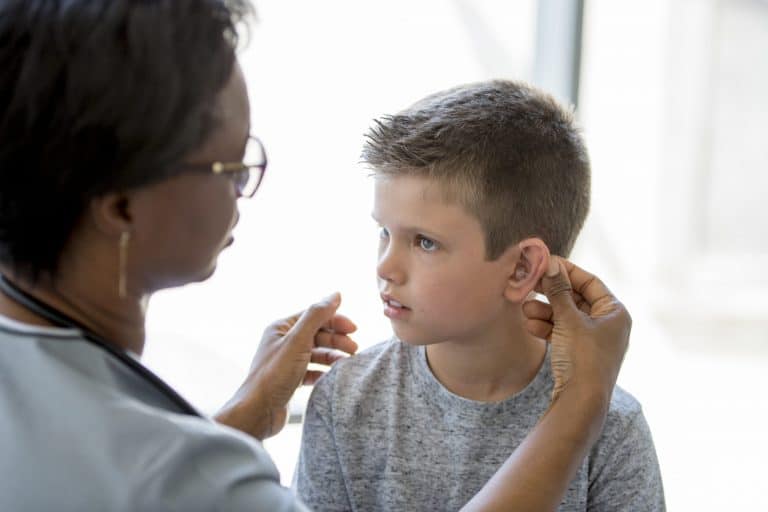According to the Centers for Disease Control & Prevention (CDC), approximately 15 percent of children ages six to 19 have hearing loss in one or both ears. Research shows that even hearing loss in one ear can have a major impact on school performance; in fact, 25 to 35 percent of children with unilateral hearing loss are at risk of failing at least one grade level.
Fortunately, a 2015 study shows that hearing-impaired children have improved outcomes at school when they use hearing aids.
About the Study 
Researchers at the University of Iowa studied 180 preschool-aged children with hearing loss from six U.S. states by examining records of universal newborn screenings and referrals from clinical service providers.
They found that the children who wore hearing aids experienced better speech and language development than children whose hearing loss went untreated. The longer the child had worn hearing aids, the better their development.
“The cautionary note from our research is that any degree of hearing loss, even mild, can place children at risk. Our study shows that the risk can be minimized with early and aggressive intervention,” said Bruce Tomblin, professor in the University of Iowa’s Department of Communication Sciences and Disorders.
How Hearing Impacts Development
Hearing affects more than the ability to listen and communicate. It helps children develop vocabulary and sentence structure, which then impacts academic achievement, social interactions and career choice.
The American Speech-Language-Hearing Association identified four major ways hearing loss can affect children:
- Hearing loss causes delays in speech and language skills.
- Language deficits result in lower academic achievement.
- Communication difficulties lead to social isolation and low self-image.
- Vocational options may be limited.
When Should a Child Receive Treatment?
The Joint Committee on Infant Hearing recommended in 2007 that all infants receive a hearing screening by one month of age; those who don’t pass should have additional screening and receive diagnosis by three months of age. Babies with confirmed hearing loss should then receive intervention services by six months of age for best outcomes.
Talk to your doctor about your baby’s hearing and development, and pay attention to milestones to ensure they’re on track. By three months old, a baby with normal hearing should react to loud sounds and be soothed by familiar voices. By six months, children should follow sounds with their eyes, notice noisy toys, react to music, and laugh, babble and make gurgling sounds.
If your child is not keeping up with these milestones, it may indicate hearing loss. Contact your child’s pediatrician or a pediatric audiologist for a hearing screening.
For more information or to schedule an appointment, call the experts at Mt. Hood ENT today.
